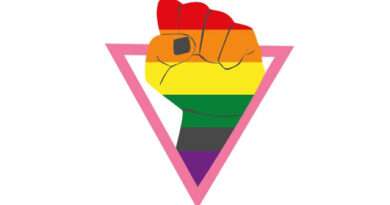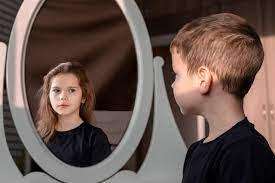The A to Z of Biphobia

“Why can’t you pick one?”
“You’re a slutty swinger”
“So, are you straight now?”
“It’s just a phase, eventually you’ll find your taste”
“Bisexuals are inherently cheaters!”
And the list goes on.
Although the queer spectrum is broadening every day, the Bisexuals (B) of the LGBTQ community are still victims of sheer stigmatization. Are we aware that we often neglect biphobia? Bisexual people face several false stereotypes and misunderstandings from those who do not identify as bisexual.
WHO ARE BISEXUALS?
Bisexuality has been defined by many as “a sexual orientation defined by romantic,
emotional, and/or sexual attraction towards people of two genders, typically women and men.”
WHAT’S BIPHOBIA?
The literal meaning of biphobia is “the fear of, discrimination and prejudice against,
hatred or dislike of bisexuals.” It includes making jokes about their choices based on stereotypical statements, harassment, etc.
• Bisexual people experience “double discrimination” – negative behavior based on
their sexual orientation from people from gay and lesbian communities, as well as from straight people.
• Almost two-thirds of bisexuals have reported hearing biphobic jokes at work. Nearly half of them reported facing biphobia from their doctors.
• “Bi-negativity” was the greatest predictor of whether a person was likely to be abusive to their bisexual intimate partner.
• Bisexuals reported higher quantities of discrimination from heterosexual people
compared to gay and lesbian people.
• Bisexual women are often viewed as more confused, promiscuous, and neurotic than straight and lesbian women.
• Nearly half of all bisexual women have experienced rape and three-quarters of
bisexual women have experienced sexual violence.
• Bisexual teens are more likely to have thoughts of suicide that carry into adulthood
than any other self-identified group.
COMMON STEREOTYPES
• Promiscuity and voracious libido:
Accused of having an inability to remain committed or monogamous.
Assuming them as a nymphomaniac who only broaden their sexuality to get more
options for sex.
Falsely accused only to be satisfied with both male and female partners simultaneously.
• Bisexuals are accused of bringing sexually transmitted disease into the heterosexual
community or lesbian community.
• Homophobes may think that bisexuals are gender nonconformist.
Heterophobes often think of bisexuals as maintaining privilege and collaborating with the homophobes.
• Many bisexual people are criticized for not picking a side and being selfish by others in the gender spectrum.
• Also criticized for not being “brave enough” or “true enough” to themselves to come
out fully.
• Lesbians have the fear that a bisexual woman will leave a woman for a man;
heterosexual males having an unfair systemic advantage both due to sexism and due to homophobia.
• Many biphobes also believe that bisexuality is a trend, especially a teenage one,
popularized by bisexual musicians, actors, etc.
• Some radical lesbian feminists think that bisexual women are giving in to patriarchy.
• Bi-erasure. For example:
Expecting any bisexual person to “come out” as “actually” straight or gay/lesbian.
Assuming when a bisexual person has a partner, she/he/them is now gay or straight and no longer bisexual
Using the adjective “gay” for “same-gender”, as in “gay marriage”
REASONS
MONOSEXISIM
Biphobia persists in both straight and gay/lesbian communities in large part because of monosexism. Straight, gay, and lesbian people experience monosexuality — a sexual orientation towards only one gender.
It can be difficult for straight, gay, and lesbian people to imagine the capacity to be attracted to more than one gender.
LACK OF PROPER REPRESENTATION
Bisexual female characters (males are hardly represented) are usually portrayed the same way: the wild-eyed, hyper-promiscuous, loose cannon bisexual woman who
guiltlessly sleeps around or cheats on her partner for another person of the same/opposite sex. Therefore, misrepresenting bisexuals as so-called lascivious people.
Apart from this, bisexuals are underrepresented in media than their straight/gay/lesbian counterparts.
SOLUTIONS
DEALING WITH OTHERS’ BIPHOBIA
• By undertaking bi-visibility: a way to increase awareness and acceptance of bisexuality as a sexual orientation could be commenced by bisexual individuals, bisexual communities, and allies who are not bisexual.
• Deny their denials: Bisexuality is not a temporary situation within a transition between hetero- and homosexuality.
• Addressing common misconceptions by responding: Bisexuals are not “undecided” or “confused” — they are living life on their terms.
• Plan for biphobia conflated with homophobia. Fight against biphobia like the way you raise your voice against homophobia.
• Counter possible biphobia from supporters of gay and lesbian rights.
• Understand bullying motivations and do not stand for bullying.
DEALING WITH YOUR BIPHOBIA
• Address your discomfort, face your fears, read more on bisexuality.
• Stop the “blame game.” Bisexuals are not typically cheaters or HIV positive.
• Put yourself in their shoes. How would you feel if you were subjected to experience
such stereotypical stigmas?
I hope this article will be a revelation for a lot of people. During this Bisexual Awareness Week, we must clear our misconceptions about bisexual/bi-romantic individuals by battling internalized biphobia. After all, bisexuals are part of our community and they deserve equal human rights!
REFERENCES
Bisexual Resource Center, “Bisexuality 101“
Brian Murphy, “Bisexuality and Christian Homophobia,” Queer Theology (2019)
Dworkin SH (2001). Treating the bisexual client. Journal of Clinical Psychology 57 (5):
671-80. PMID 11304706
Eliason MJ (1997). The prevalence and nature of biphobia in heterosexual
undergraduate students. Archives of Sexual Behavior 26 (3): 317-26. PMID 9146816
http://nsrc.sfsu.edu/MagArticle.cfm?Article=475&PageID=171&SID=2F61BCD15F44001
9472CA01253795FEB&DSN=nsrc_dsn
http://www.bialogue.org/Pages/InfoPackets/MentalHealth.html
http://www.nytimes.com/2005/07/05/health/05sex.html
https://rewire.news/article/2018/04/25/know-biphobia-harmful-know-whats-behind/
https://www.entitymag.com/biphobia-bisexual-lgbtq/
https://www.wikihow.com/Deal-With-Biphobia
Kirsten McLean. 2018. 5 Bisexuality in Society. Bisexuality, pages 77-93.
M. Sue Crowley. (2010) Experiences of Young Bisexual Women in Lesbian/Bisexual
Groups on MySpace. Journal of Bisexuality 10:4, pages 388-403.
Michael McLeish, “Bisexual VS Pansexual” (2015)
National Intimate Partner and Sexual Violence Survey, Findings on Victimization by
Sexual Orientation (2010)



